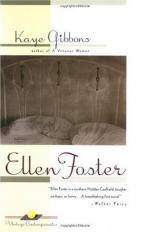|
This section contains 9,913 words (approx. 34 pages at 300 words per page) |

|
SOURCE: “‘Colored Biscuits’: Reconstructing Whiteness and the Boundaries of ‘Home’ in Kaye Gibbons's Ellen Foster,” in Women, America, and Movement, edited by Susan L. Roberson, University of Missouri Press, 1998, pp. 38-61.
In the following essay, Munafo discusses Ellen's changing attitudes toward racial differences in Gibbons's Ellen Foster and the implications Ellen's attitude has on the novel as an antiracist text.
Whether they are able to enact it as a lived practice or not, many white folks active in anti-racist struggle today are able to acknowledge that all whites (as well as everyone else within white supremacist culture) have learned to over-value “whiteness” even as they simultaneously learn to devalue blackness. They understand the need, at least intellectually, to alter their thinking. Central to this process of unlearning white supremacist attitudes and values is the deconstruction of the category “whiteness.”
—bell hooks, Black Looks: Race and Representation
There's a...
|
This section contains 9,913 words (approx. 34 pages at 300 words per page) |

|


